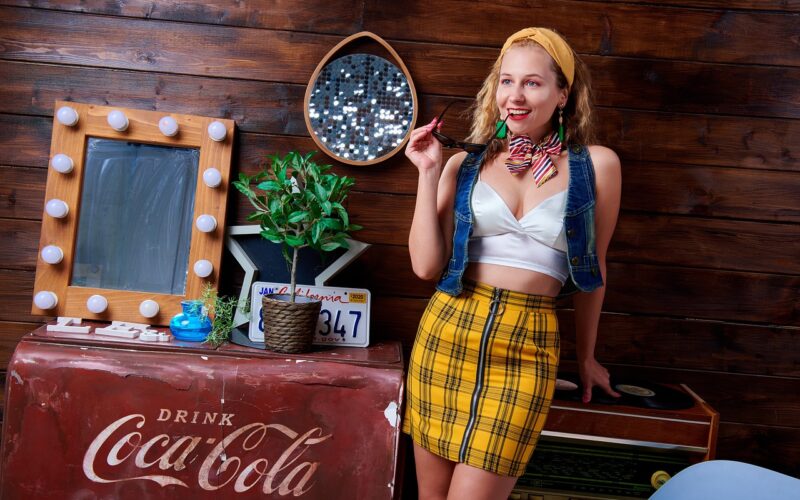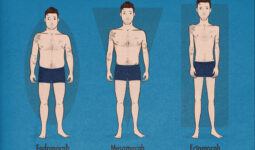The swinging sixties marked one of the most revolutionary decades in fashion history, breaking away from traditional styles and embracing bold new expressions of individuality.
From mini skirts to go-go boots, this era transformed how people dressed and challenged societal norms through clothing.
Fashion in the 1960s became significantly more casual across all genders and ages, introducing vibrant psychedelic prints, neon colors, and mismatched patterns that continue to influence modern style trends today.
As you explore these fun facts about 60s fashion, you’ll discover how this decade’s distinctive styles weren’t just about clothing but represented broader cultural shifts and youth rebellion.
The fashion movements of this era reflected the social changes happening worldwide, from civil rights to women’s liberation, making 60s fashion not just visually striking but historically significant.
You’ll see how many elements from this iconic decade have cycled back into contemporary wardrobes, proving the timeless appeal of 60s innovation.
1. The mini skirt, popularized by Mary Quant, symbolized 60s rebellion and youthfulness
The mini skirt became one of the most iconic fashion statements of the 1960s, representing the era’s spirit of youth rebellion.
While Mary Quant is often credited with inventing the mini skirt, she was actually its most influential popularizer, bringing this daring hemline into mainstream fashion.
When you think of 60s fashion, you probably picture those short, above-the-knee skirts that scandalized older generations.
The mini wasn’t just a fashion choice—it was a statement. It represented your generation’s desire for freedom and a clear break from the conservative styles your parents wore.
The mini skirt was deliberately youthful and playful, part of a larger youth movement where teenagers no longer wanted to dress like adults.
Quant herself explained that these “short short skirts” indicated youthfulness, which was highly desirable in 60s fashion circles.
As you explored your independence in the swinging sixties, the mini skirt became a symbol of the feminist movement, reflecting women’s growing autonomy.
What made this garment revolutionary wasn’t just its length, but how it embraced the desire for freedom and challenged social conventions.
2. Twiggy’s thin frame and mod style made her the ultimate 60s fashion icon
Lesley Hornby, better known as Twiggy, revolutionized fashion with her striking androgynous look and pixie haircut.
At just 16 years old, this British teen became the face of the Swinging Sixties after a hairdresser displayed her photographs in his salon.
You might recognize Twiggy for her signature features – those dramatic painted eyelashes, boyish short hair, and impossibly slender frame that earned her that famous nickname.
Standing at 5’6″ and weighing about 91 pounds, her unique physique challenged the curvier beauty standards of previous decades.
When you think of mod fashion, Twiggy immediately comes to mind with her go-go boots and mini skirts.
Her style perfectly embodied the youthful rebellion of the era. She was the first model truly celebrated for an androgynous appearance, inspiring a collective movement toward fashion fluidity.
You can still see Twiggy’s influence today in contemporary fashion.
Her iconic status transcended modeling as she later ventured into acting and music, but it’s her distinctive look that continues to define 1960s style in our collective memory.
3. Psychedelic prints with neon colors captured the vibrant spirit of the late 60s
The late 1960s fashion scene exploded with vibrant colors and kaleidoscopic patterns that mirrored the era’s experimental mindset.
You couldn’t walk down the street without spotting these eye-catching designs that defined the counterculture movement.
These psychedelic prints weren’t just random designs—they were visual expressions of the expanding consciousness that characterized the decade.
Many patterns drew inspiration from Art Nouveau and 19th century Orientalism, creating a unique aesthetic that still influences fashion today.
The color palette was unmistakable—vivid pinks, purples, and oranges dominated the scene.
You might have seen these bold hues in the tie-dye shirts and paisley prints that became symbols of youth rebellion and free expression.
Neon greens, electric pinks, and cosmic purples weren’t just fashion choices—they were statements.
When you wore these colors, you were participating in a visual revolution that rejected the more conservative styles of earlier decades.
The influence of these designs continues to cycle through fashion today.
Whenever you see distorted visuals and kaleidoscopic patterns, you’re witnessing the enduring legacy of this colorful era.
4. Men’s flared trousers allowed for more flamboyant and expressive dressing
The 1960s revolutionized menswear with flared pants becoming a signature mark of the era.
These bold trousers, which widened dramatically from the knee down, gave men unprecedented freedom to express their personal style after decades of conservative dressing.
You might recognize these pants by their more popular nickname – bell bottoms.
Originally worn by sailors for completely practical reasons, these trousers transformed into powerful symbols of countercultural fashion and self-expression.
The flared silhouette allowed men to incorporate vibrant patterns and materials that were previously considered too daring.
Crafted from denim, corduroy, or other durable materials, these pants came in eye-catching colors and psychedelic prints that perfectly captured the era’s experimental spirit.
Another significant change was how these pants sat lower on the body than previous decades’ trousers.
This seemingly small adjustment created a more relaxed, youthful silhouette that continues to influence men’s fashion today.
When you imagine the 60s man, you probably picture these iconic flares paired with equally expressive tops – creating a complete look that challenged traditional gender expectations and embraced a new era of male fashion freedom.
5. Audrey Hepburn pioneered sleeveless dresses, blending elegance with modernity.
When you think of 1960s fashion icons, Audrey Hepburn stands at the forefront of revolutionary style.
Her iconic appearance in a sleeveless Givenchy dress in “Breakfast at Tiffany’s” pioneered a new silhouette that would define an era.
Before Hepburn made them fashionable, sleeveless dresses were considered somewhat casual or inappropriate for formal settings.
You might be surprised to learn that her elegant interpretation transformed these pieces into symbols of sophistication and high fashion.
Hepburn’s approach to fashion merged simplicity with refinement, creating a lasting legacy as an enduring icon of both the 1950s and 1960s style.
Her slim silhouettes and bare arms represented a modern woman—independent, confident, and unbound by previous fashion constraints.
In films like “Funny Face,” you can spot her wearing various stylish outfits from casual pants to tailored suits, but her sleeveless dresses remain the most influential.
They perfectly captured the decade’s spirit of breaking free from traditional fashion rules.
You can still see Hepburn’s influence today, as contemporary designers continue to reference her timeless approach to elegance with a modern twist.
6. False eyelashes were a signature beauty trend throughout the decade for women
False eyelashes have been around for over a hundred years, but they truly became iconic in the 1960s.
You might recognize this dramatic look from photos of fashion icons like Twiggy, who famously wore false lashes on both her top and bottom lids, creating a doll-like appearance that defined the era.
The early part of the decade saw celebrities like Elizabeth Taylor and Marilyn Monroe popularizing the bold lash look.
Their glamorous style inspired women across America to experiment with this eye-enhancing accessory.
What made this trend truly remarkable was its widespread adoption.
A staggering twenty million false eyelashes were sold during this period, demonstrating just how essential they became to achieving the quintessential 60s look.
The dramatic eye was often paired with the signature cat eye, created using thick eyeliner and heavy eye shadow.
You would have seen this look everywhere, from fashion magazines to your local beauty salon.
When you wore false lashes in the 60s, you weren’t just following a trend—you were participating in what fashion historians now call the “lash revolution.”
7. The Beatles influenced longer hair trends for men, breaking conventional norms
Before the Beatles hit the American scene, most men sported neat crewcuts or combed-back hairstyles.
When the Fab Four arrived with their signature mop-top haircuts, it caused quite the sensation across the United States and beyond.
The Beatles didn’t suddenly appear with extremely long hair.
Instead, they gradually shaped their hair differently, moving away from the slicked-back look that dominated men’s fashion at the time.
As their popularity soared, so did their influence on men’s grooming habits.
You might be surprised to learn that their impact was so significant that the traditional American male look was completely transformed, with longer hair becoming not just acceptable but desirable.
By the late 1960s, the Beatles themselves had evolved their style significantly.
Their hair grew even longer, and they began incorporating Eastern fashion elements like kurtas and Persian patterns into their wardrobe.
The band’s influence extended beyond just hair length. Their evolving style throughout the decade gave men permission to experiment with their appearance in ways previously considered taboo in Western culture.
8. A-line dresses became a staple for their flattering and youthful silhouette
The A-line dress, which widens gradually from the shoulders to form an “A” shape, emerged as one of the most beloved silhouettes of the 1960s.
You might recognize this iconic style from vintage fashion magazines or perhaps your mother’s old photographs.
Introduced earlier by Christian Dior, the A-line truly flourished during the ’60s when it began to replace the nipped-in waist styles that dominated the previous decade.
Its flattering shape skimmed over the hips rather than hugging them, creating a more relaxed and youthful appearance.
What made the A-line so revolutionary was its versatility. You could find these dresses in mini, midi, and maxi lengths, appealing to women of different ages and style preferences.
The A-line wasn’t just fashionable—it was practical! The shape allowed for greater movement than pencil skirts, making it perfect for the increasingly active lifestyle of the modern ’60s woman.
Many featured simple, clean lines that complemented the bold prints and vibrant colors popular during this era.
Even today, you can spot A-line influences in contemporary fashion, proving that this silhouette has truly stood the test of time.
9. Color blocking in bright shades reflected the optimistic vibe of Swinging London
The 1960s ushered in an explosion of color that perfectly captured the youthful energy of Swinging London.
You could spot fashionable Londoners wearing bold combinations of bright shades of red, yellow, orange, and blue that created eye-catching designs full of energy and positivity.
These vibrant color blocks weren’t just fashion statements – they represented the optimistic outlook of a generation breaking free from post-war austerity.
When you wore these bold combinations, you were part of a cultural revolution that valued self-expression and joy.
London designers created slim-fitting, brightly coloured outfits that became hugely influential throughout Britain and beyond.
The trend spread rapidly across Europe and America, cementing London’s status as a fashion capital.
Color blocking offered a sleek, urban sensibility that contrasted with the more organic, free-flowing aesthetic of the hippie movement.
You might remember how these geometric arrangements of color created a modern, space-age look that felt incredibly forward-thinking.
The ‘Youthquake’ movement that defined this era shifted fashion power away from Parisian couture and toward London’s boutique scene, where color blocking flourished in windows all along Carnaby Street and King’s Road.
10. Synthetic textiles like polyester revolutionized 60s fashion, making clothes more affordable
The 1960s marked a textile revolution with the rise of synthetic materials like polyester, PVC, acrylic, and nylon.
These man-made fabrics changed how you shopped and dressed during this transformative decade.
Before synthetics took over, natural fabrics dominated your closet – cotton, wool, and silk required careful maintenance and came at higher prices.
When polyester arrived on the scene, you suddenly had access to more affordable clothing options that didn’t break the bank.
These new textiles weren’t just economical – they were practical too! Your polyester outfits were wrinkle-resistant, quick-drying, and didn’t require the meticulous care of natural fibers.
Remember how easily you could wash and wear these garments?
Space age fashion designers like Pierre Cardin embraced these innovative materials to create bold, futuristic silhouettes with plastic-like textures that captured the era’s forward-thinking spirit.
The bright colors and easy maintenance of these fabrics perfectly complemented the casual fashion revolution happening across all age groups.








